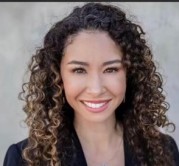Teaching kids the language of money

The most effective time to teach children a new language is during the ages of 0 and 10 while their brains are forming trillions of connections. Due to a process called synaptic pruning, several of these connections will be discarded by the brain to make it more efficient. While this pruning happens throughout a lifetime, it is most active during early childhood, so children will only preserve the connections that are reinforced through heightened experience and repetition. Children can learn languages simply by being exposed to them, but after this window of opportunity, fluency is difficult and it is almost impossible to be as good as a native speaker. Why is this window of opportunity important to credit unions? The answer is simple. Money is a language, and we want to make kids fluent.
People are always shocked and skeptical when we tell them that money habits are set by age 7, and that kids as young as five have already developed emotional reactions to saving and spending money. These stats continually surprise people, and it’s understandable. The world of finances is confusing. The average person practically needs an interpreter to finance a car. And since even many adults find money confusing, we automatically assume that kids cannot understand, and so we wait. The irony is that by not introducing kids to the complexities of money early on, we are perpetuating a cycle of financial illiteracy.
In an article by Liz Weston: Why is money is so confusing?, she describes money as a new language. “You wouldn’t expect to carry on a fluent conversation in Madrid or Mexico City if you only knew a few words of Spanish. Similarly, personal finance is loaded with terms, jargon and concepts that take a while to learn.” Young kids are the ideal candidates to start learning the language of money. They don’t need to be able to describe the causes of the sub-prime mortgage crisis, but they can learn the basics. The longer they have to learn, absorb, and grow their understanding, the better. By exposing them to money conversations early, they have a lifetime to add context through experience.
Experts promote a three-pronged approach to learning a new language: 1) study vocabulary, 2) master the fundamentals, and 3) don’t be afraid to make mistakes. These rules similarly apply to teaching kids about money.
Half of Americans cannot define the term “mortgage”. Is the concept so difficult that Americans cannot understand it? Of course not; we somehow all follow the plot of the latest Marvel movie where characters are jumping through time and the metaverse. This failure simply betrays a lack of early education. The language of money presents many specialized terms that do a lot of hard work. Just one word may describe an entire complex concept. While these words are efficient, they can also feel exclusive and intimidating. Giving children authority over these words is a promise of empowerment. Whether we like it or not, by choosing not to teach financial vocabulary, we are contributing to an ever-widening wealth gap between those who speak the language of money and those who do not. There are several companies who are creating age-appropriate content to expose and teach kids these words and most are free. Check out Easy Peasy Finance and My First Nest Egg which both feature kids teaching other kids financial vocabulary with cute skits (and some potty humor).
The first thing you learn in a foreign language class is how to introduce yourself, ask for help, find food, and, most importantly, locate the bathroom. Why? Because these are the things you will use most often, and not being able to communicate these things make it difficult to operate. Similarly, there is a concept that sets the stage for all personal finance – needs vs. wants. This simple lesson is often ignored, as evidenced by children throwing a fit in the middle of a supermarket declaring their “need” for cookies. But without solidifying this basic lesson, the rest of personal finance is impossible. You can’t have a budget if there is no ability to prioritize the things we need v. the many, many things we want.
Jumpstart even the youngest children on their personal finance journey by having them place everything you purchase into a need or want bucket. Make it a game. Every supermarket trip, every Amazon purchase, every meal provides an opportunity to arm children with the skill of prioritizing things in their lives. Sounds simple, and yet, most Americans are failing. They are buying simply because they “feel like it,” without processing the reason behind the purchase. For example, Americans, on average, buy more than one item of clothing each week.” Unless you are the Incredible Hulk, how many new shirts does one truly need?
No one can get better at speaking a new language without actually practicing. It is inevitable that this new speech will be riddled with mistakes, missed phrases, mispronunciations, and sometimes faux pas. Try to remember the adorable mistakes kids make when learning their own native language. Language teachers constantly reassure their students that mistakes are a healthy and important part of learning to speak. No financial expert would ever advise an adult to improve their financial situation by making mistakes. The stakes are too high. However, for kids to become proficient with money, they should absolutely be allowed to make mistakes while the risks are still low. There are few lessons as powerful as allowing a child to misspend their hard-earned money on a whim. Allow them to spend on a frivolous “want.” Allow them to feel disappointment when a cheap toy breaks. Allow them to regret an impulse buy. And most importantly, never ever refund them for their poor decisions. By allowing them to fully experience and internalize a money mistake, you are arming a child to be more cautious in the future.
Frank Smith said, “language is not a genetic gift, it is a social gift. Learning a new language is becoming a member of the club….” A commitment to financial wellness for all needs to include a push to make everyone a member of the financially literate club. By starting this education early, we form the greatest chance of creating truly fluent speakers.





